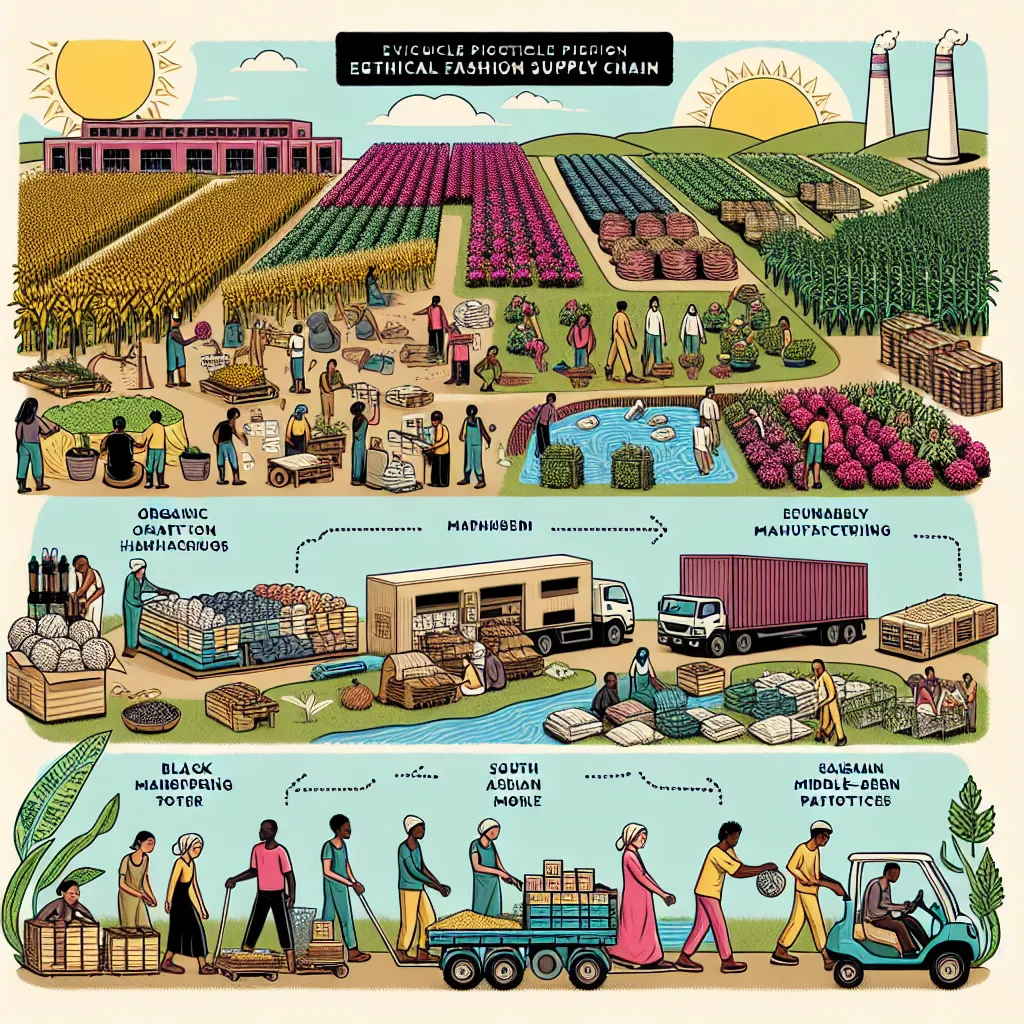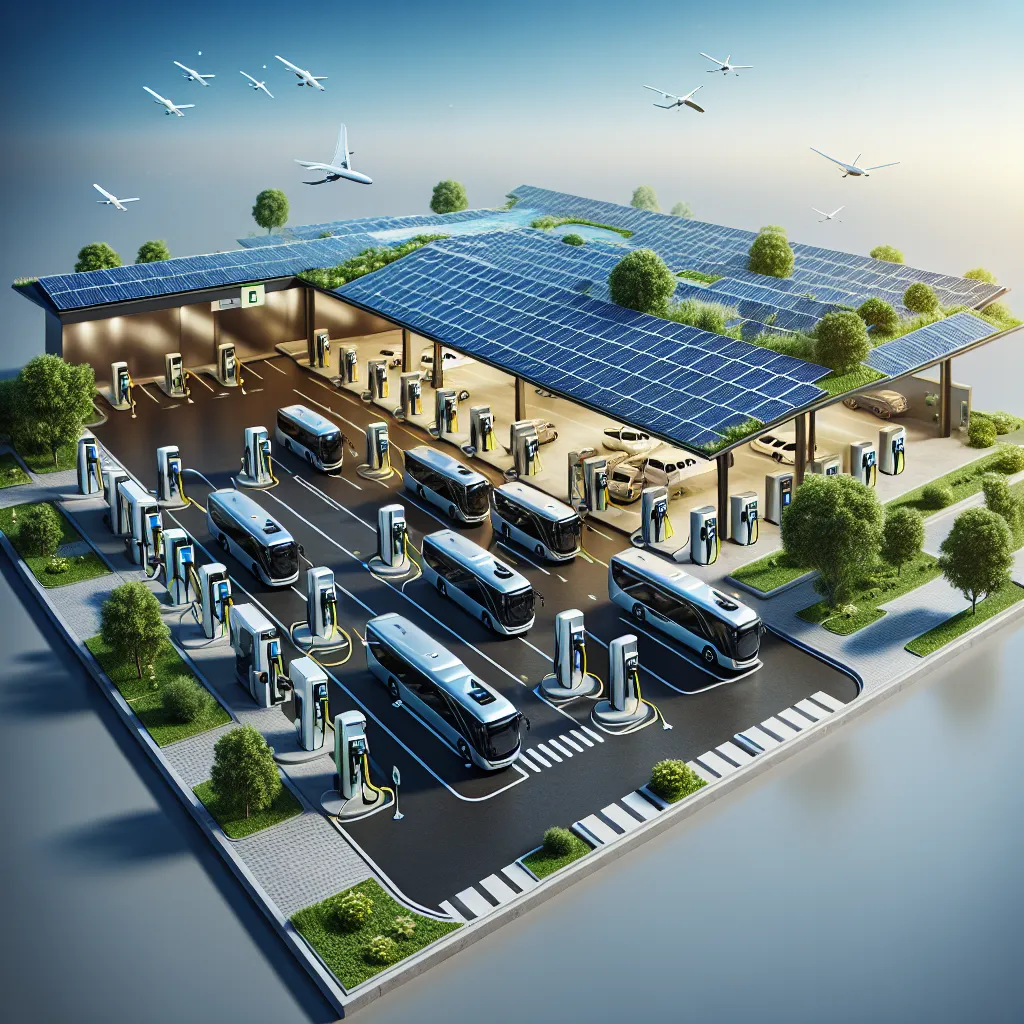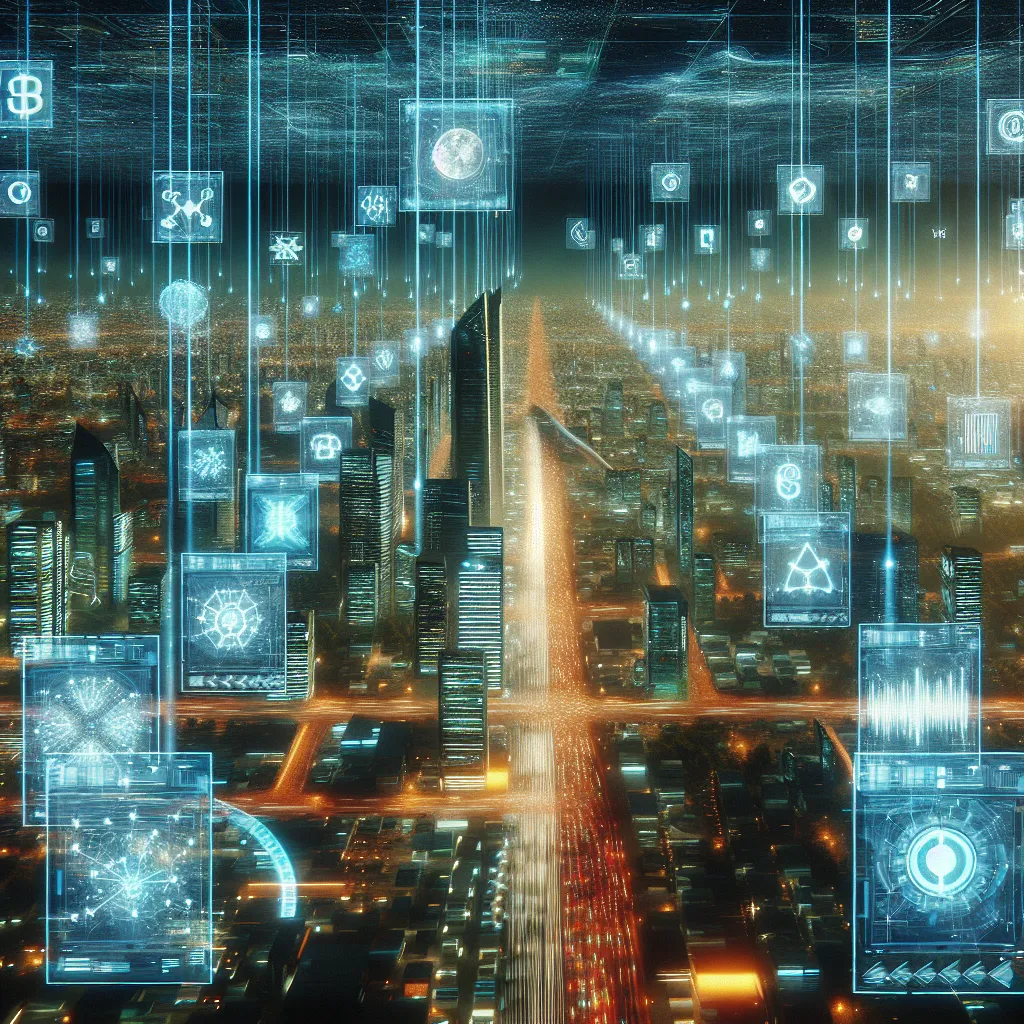Welcome to our IELTS Reading practice test focused on the timely topic of “The rise of ethical fashion in global clothing markets.” This comprehensive test will help you prepare for the IELTS Reading section by providing authentic passages and questions that mirror the actual exam. Let’s dive into this fascinating subject and enhance your reading skills!
Nội dung bài viết
- Introduction
- Passage 1 (Easy Text)
- The Shift Towards Ethical Fashion
- Questions 1-5
- Questions 6-10
- Passage 2 (Medium Text)
- The Global Impact of Ethical Fashion
- Questions 11-14
- Questions 15-19
- Question 20
- Passage 3 (Hard Text)
- The Paradigm Shift: Ethical Fashion’s Transformation of Global Clothing Markets
- Questions 21-26
- Questions 27-33
- Questions 34-40
- Answer Key
- Passage 1
- Passage 2
- Passage 3
Introduction
The IELTS Reading test consists of three passages of increasing difficulty, each followed by a set of questions. This practice test will cover the topic of ethical fashion and its growing impact on global clothing markets. You’ll encounter a range of question types and vocabulary related to sustainability, consumer behavior, and the fashion industry.
Passage 1 (Easy Text)
The Shift Towards Ethical Fashion
In recent years, there has been a noticeable shift in consumer attitudes towards clothing. Many shoppers are now looking beyond mere style and price when making purchasing decisions. They are increasingly concerned about the ethical implications of their fashion choices, considering factors such as environmental impact, labor conditions, and animal welfare.
This change in consumer behavior has given rise to the concept of “ethical fashion.” Ethical fashion encompasses clothing that is produced and distributed with consideration for both people and the planet. It includes garments made from sustainable materials, manufactured under fair labor conditions, and designed to minimize waste.
The growth of ethical fashion is not just a passing trend. It represents a fundamental change in the way people think about their clothing. Consumers are becoming more conscious of the long-term consequences of their purchases and are willing to pay a premium for products that align with their values.
Major fashion brands have taken note of this shift. Many are now implementing sustainable practices and transparent supply chains to meet the demands of ethically-minded consumers. From using organic cotton to ensuring fair wages for workers, companies are finding ways to make their operations more responsible.
However, the transition to ethical fashion is not without challenges. Balancing affordability with sustainability remains a significant hurdle. Additionally, there is still a need for greater education and awareness among consumers about the impact of their clothing choices.
Despite these challenges, the rise of ethical fashion continues to gain momentum. As more consumers prioritize sustainability and ethics in their purchasing decisions, the global clothing market is adapting to meet these new demands. The future of fashion looks set to be not just stylish, but also conscientious and sustainable.
Questions 1-5
Do the following statements agree with the information given in the passage?
Write:
TRUE if the statement agrees with the information
FALSE if the statement contradicts the information
NOT GIVEN if there is no information on this
- Consumers now consider only style and price when buying clothes.
- Ethical fashion includes clothing made from sustainable materials.
- All major fashion brands have fully transitioned to ethical practices.
- The shift towards ethical fashion is a temporary trend.
- Balancing affordability with sustainability is a challenge for ethical fashion.
Questions 6-10
Complete the sentences below.
Choose NO MORE THAN TWO WORDS from the passage for each answer.
- Ethical fashion considers the impact on both people and the ___.
- Consumers are willing to pay a ___ for products that align with their values.
- Companies are implementing ___ supply chains to meet consumer demands.
- There is a need for greater ___ among consumers about the impact of their clothing choices.
- The future of fashion is expected to be not just stylish, but also ___ and sustainable.
Passage 2 (Medium Text)
The Global Impact of Ethical Fashion
The rise of ethical fashion is having a profound impact on global clothing markets, reshaping industry practices and consumer behaviors worldwide. This shift towards more sustainable and socially responsible fashion is not merely a Western phenomenon but a global movement that is gaining traction across diverse cultures and economies.
In developed markets, ethical fashion has moved from niche to mainstream. Consumers in countries like the United States, United Kingdom, and Germany are increasingly scrutinizing the environmental and social impact of their clothing purchases. This heightened awareness has led to the growth of eco-friendly brands and the adoption of sustainable practices by established fashion houses.
Emerging markets are also playing a crucial role in the ethical fashion revolution. Countries like India and China, traditionally seen as manufacturing hubs, are now becoming significant consumers of ethical fashion. The rising middle class in these nations is increasingly conscious of global issues and is demanding products that reflect their values.
The impact of ethical fashion extends beyond consumer choices to influence entire supply chains. Textile producers are innovating to create more sustainable fibers, while manufacturers are implementing cleaner production processes. Retailers are rethinking their business models, with some embracing circular economy principles such as clothing rental and resale platforms.
However, the transition to ethical fashion is not without challenges. The complexity of global supply chains makes it difficult to ensure complete transparency and accountability. Additionally, there is the risk of “greenwashing,” where companies may exaggerate their environmental credentials to appeal to conscious consumers.
Despite these hurdles, the momentum behind ethical fashion continues to grow. Technological advancements are making sustainable production more feasible and cost-effective. Blockchain technology, for instance, is being used to increase supply chain transparency, allowing consumers to trace the journey of their garments from raw material to finished product.
Governments and international organizations are also playing a role in promoting ethical fashion. Regulations on textile waste, chemical use, and labor practices are becoming more stringent in many countries. Initiatives like the UN’s Sustainable Development Goals are providing a framework for the fashion industry to align its practices with global sustainability objectives.
As ethical fashion gains prominence, it is reshaping consumer expectations and industry standards. The future of global clothing markets appears to be one where sustainability and ethics are not just add-ons but fundamental aspects of fashion. This shift promises not only to reduce the industry’s environmental footprint but also to create more equitable and resilient supply chains worldwide.
 Ethical Fashion Supply Chain
Ethical Fashion Supply Chain
Questions 11-14
Choose the correct letter, A, B, C, or D.
-
According to the passage, the rise of ethical fashion is:
A) Limited to Western countries
B) A global phenomenon
C) Only popular in emerging markets
D) Declining in developed countries -
In emerging markets like India and China:
A) Ethical fashion is not popular
B) Only the poor are interested in ethical fashion
C) The rising middle class is driving demand for ethical fashion
D) Ethical fashion is limited to manufacturing -
The transition to ethical fashion faces challenges due to:
A) Lack of consumer interest
B) High prices of sustainable materials
C) Complexity of global supply chains
D) Resistance from fashion brands -
Which technology is mentioned as a tool for increasing supply chain transparency?
A) Artificial Intelligence
B) 3D printing
C) Virtual Reality
D) Blockchain
Questions 15-19
Complete the summary below.
Choose NO MORE THAN TWO WORDS from the passage for each answer.
The rise of ethical fashion is having a significant impact on global clothing markets, influencing both industry practices and consumer behaviors. In developed markets, consumers are increasingly (15) the environmental and social impact of their clothing purchases. This has led to the growth of eco-friendly brands and the adoption of sustainable practices by established fashion houses. Emerging markets are also playing a crucial role, with the (16) in countries like India and China demanding products that reflect their values.
The impact of ethical fashion extends beyond consumer choices to entire supply chains. Textile producers are (17) to create more sustainable fibers, while manufacturers are implementing cleaner production processes. However, the transition faces challenges, including the risk of (18) , where companies may exaggerate their environmental credentials.
Despite these hurdles, technological advancements are making sustainable production more feasible. Governments and international organizations are also promoting ethical fashion through stricter regulations and initiatives like the UN’s (19) ___. As ethical fashion gains prominence, it is reshaping consumer expectations and industry standards worldwide.
Question 20
Choose the correct letter, A, B, C, or D.
- The main idea of the passage is that ethical fashion:
A) Is only popular in Western countries
B) Is having a significant global impact on the fashion industry
C) Is too expensive for most consumers
D) Is a temporary trend that will soon fade
Passage 3 (Hard Text)
The Paradigm Shift: Ethical Fashion’s Transformation of Global Clothing Markets
The ascendancy of ethical fashion in global clothing markets represents a paradigm shift that is fundamentally altering the industry’s landscape. This transformation extends far beyond mere changes in consumer preferences; it encompasses a comprehensive reevaluation of the fashion industry’s role in society and its impact on the planet. The ramifications of this shift are multifaceted, affecting every aspect of the clothing supply chain from raw material sourcing to end-of-life product management.
At the core of this transformation is a growing recognition of the fashion industry’s substantial environmental footprint. The sector has long been criticized for its resource-intensive practices, from water-hungry cotton cultivation to the energy-intensive production of synthetic fibers. Moreover, the rise of “fast fashion” in recent decades has exacerbated these issues, leading to increased waste and shorter product lifecycles. In response, a new paradigm of “slow fashion” is emerging, emphasizing quality, longevity, and circular economy principles.
The ethical fashion movement is also addressing longstanding social issues within the industry. Labor exploitation, particularly in developing countries, has been a persistent concern. The tragic collapse of the Rana Plaza garment factory in Bangladesh in 2013 served as a catalyst for change, bringing global attention to the hazardous working conditions faced by many in the industry. This incident galvanized both consumers and industry leaders to demand greater transparency and accountability in supply chains.
Technological innovation is playing a crucial role in facilitating the transition to more ethical practices. Blockchain technology, for instance, is being leveraged to create transparent and traceable supply chains, allowing consumers to verify the provenance and production conditions of their garments. Meanwhile, advancements in material science are yielding new sustainable fabrics, from biodegradable synthetics to textiles made from recycled ocean plastics.
The rise of ethical fashion is also reconfiguring market dynamics. Established brands are facing competition from a new generation of purpose-driven startups that place sustainability at the core of their business models. This shift is forcing legacy brands to adapt, leading to a wave of sustainability initiatives across the industry. However, the transition is not without challenges. Greenwashing remains a significant concern, with some companies accused of making superficial or misleading claims about their environmental credentials.
Consumer behavior is evolving in tandem with these industry changes. There is a growing segment of consumers who are willing to pay a premium for ethically produced clothing. This shift is particularly pronounced among younger generations, who often view their purchasing decisions as expressions of their values and identities. However, bridging the gap between stated preferences and actual buying behavior remains a challenge, as price and convenience continue to be significant factors in purchasing decisions.
The regulatory landscape is also adapting to this new paradigm. Governments around the world are implementing stricter regulations on textile waste, chemical use, and labor practices. The European Union, for instance, has introduced its Circular Economy Action Plan, which includes specific measures targeting the textile industry. These regulatory changes are creating both challenges and opportunities for businesses, incentivizing innovation and sustainable practices.
As ethical fashion gains prominence, it is reshaping the very definition of value in the clothing industry. Traditional metrics of success such as profit margins and market share are being supplemented by new indicators that measure social and environmental impact. This holistic approach to value creation is pushing the boundaries of business models, encouraging companies to consider their broader role in society and their long-term impact on the planet.
The rise of ethical fashion in global clothing markets is more than just a trend; it represents a fundamental reimagining of the industry’s role and responsibilities. As this movement continues to gain momentum, it promises to create a more sustainable, equitable, and resilient fashion ecosystem. However, realizing this vision will require ongoing collaboration between consumers, businesses, governments, and civil society to address the complex challenges that lie ahead.
Questions 21-26
Complete the sentences below.
Choose NO MORE THAN TWO WORDS from the passage for each answer.
-
The rise of ethical fashion represents a ___ that is fundamentally changing the fashion industry.
-
The fashion industry has been criticized for its ___, including water-intensive cotton cultivation.
-
A new paradigm of “slow fashion” emphasizes quality, longevity, and ___.
-
The collapse of the ___ in Bangladesh in 2013 brought global attention to poor working conditions in the industry.
-
___ is being used to create transparent and traceable supply chains in the fashion industry.
-
The European Union has introduced its ___, which includes measures targeting the textile industry.
Questions 27-33
Do the following statements agree with the information given in the passage?
Write:
TRUE if the statement agrees with the information
FALSE if the statement contradicts the information
NOT GIVEN if there is no information on this
- The rise of “fast fashion” has led to increased waste and shorter product lifecycles.
- All established fashion brands have successfully transitioned to fully sustainable practices.
- Younger generations often view their clothing purchases as expressions of their values and identities.
- Price and convenience are no longer factors in consumers’ clothing purchase decisions.
- Governments worldwide are implementing stricter regulations on the fashion industry.
- Traditional metrics of success in the fashion industry are being entirely replaced by social and environmental impact indicators.
- Realizing the vision of ethical fashion will require collaboration between various stakeholders.
Questions 34-40
Complete the summary below.
Choose NO MORE THAN TWO WORDS from the passage for each answer.
The rise of ethical fashion represents a significant shift in the global clothing market. This transformation is driven by growing awareness of the industry’s (34) ___ and social issues. In response, a new paradigm of “slow fashion” is emerging, emphasizing quality and sustainability.
Technological innovation is playing a crucial role in this transition. (35) is being used to create transparent supply chains, while advancements in material science are yielding new sustainable fabrics. The market is also changing, with established brands facing competition from (36) that prioritize sustainability.
Consumer behavior is evolving, with a growing segment willing to pay more for ethically produced clothing. However, (37) ___ remains a concern, with some companies accused of making misleading claims about their environmental practices.
The regulatory landscape is also adapting, with governments implementing stricter rules on (38) ___, chemical use, and labor practices. These changes are creating both challenges and opportunities for businesses.
As ethical fashion gains prominence, it is reshaping the definition of (39) ___ in the clothing industry. Traditional metrics are being supplemented by new indicators that measure social and environmental impact. This holistic approach is encouraging companies to consider their broader role in society and their long-term impact on the planet.
Realizing the vision of a more sustainable and equitable fashion industry will require ongoing (40) ___ between various stakeholders to address the complex challenges ahead.
Answer Key
Passage 1
- FALSE
- TRUE
- NOT GIVEN
- FALSE
- TRUE
- planet
- premium
- transparent
- education
- conscientious
Passage 2
- B
- C
- C
- D
- scrutinizing
- rising middle class
- innovating
- greenwashing
- Sustainable Development Goals
- B
Passage 3
- paradigm shift
- substantial environmental footprint
- circular economy principles
- Rana Plaza garment factory
- Blockchain technology
- Circular Economy Action Plan
- TRUE
- FALSE
- TRUE
- FALSE
- TRUE
- FALSE
- TRUE
- environmental footprint
- Blockchain technology
- purpose-driven startups
- Greenwashing
- textile waste
- value
- collaboration
This IELTS Reading practice test on “The rise of ethical fashion in global clothing markets” provides a comprehensive overview of the topic while testing various reading skills. The passages progress from easier to more challenging texts, mirroring the structure of the actual IELTS Reading test. By practicing with this material, test-takers can improve their understanding of the subject matter and enhance their ability to handle different question types.
For more practice and information on related topics, you may find these articles helpful:
- The Rise of Sustainable Fashion in Global Markets
- Impact of Sustainable Fashion on Global Markets
- Sustainability Challenges in the Fashion Industry
Remember to time yourself when practicing and to review your answers carefully. Good luck with your IELTS preparation!


